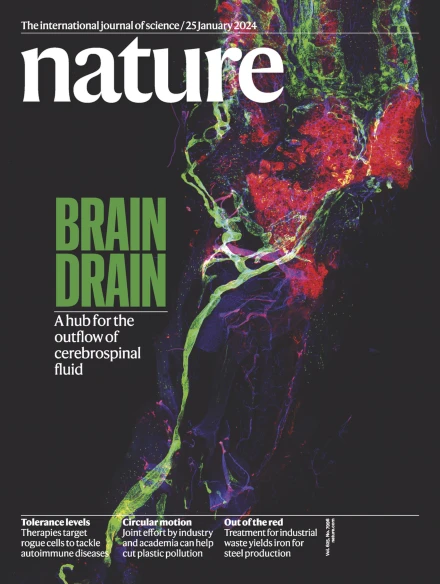以金属为中心的平面[15]环晶
IF 48.5
1区 综合性期刊
Q1 MULTIDISCIPLINARY SCIENCES
引用次数: 0
摘要
二茂铁的发现预示着现代有机金属化学的出现。二茂铁及其类似物2 - 4的特点是金属与一个或两个平面环烯阴离子的π配位,是面外环烯金属配合物的原型。相比之下,金属在环烯核心内的整合形成具有金属-碳σ键的面内环烯金属配合物,不仅受到合成困难和具有适当内部尺寸的环烯的非平面性的阻碍,而且还受到金属嵌入困难的阻碍。这些挑战阻碍了这种面内环烯金属配合物的分离。本文报道了三种以金属为中心的平面[15]环烯骨架的制备。最对称的碎片具有D5h对称,金属中心由五个相同的五元环共享。密度泛函理论计算表明,金属d轨道参与了这些五元环的共轭,使它们都是芳香的。总体框架与具有多个aza供体的金属扩展卟啉具有松散的结构和光谱相似性5,从而提供了环烯化学与经典杂原子配位化学之间的联系。本系统稳定性高,易于实现功能化。因此,我们认为以金属为中心的平面环烯可能成为材料科学的有前途的基石。本文报道了一种芳香族金属环烯,它由一个15碳大环包裹一个锇配合物,金属位于大环的平面内。本文章由计算机程序翻译,如有差异,请以英文原文为准。
![Metal-centred planar [15]annulenes](https://img.booksci.cn/booksciimg/2025-4/102303366231777419639.jpg)
Metal-centred planar [15]annulenes
The discovery of ferrocene1 heralded the advent of modern organometallic chemistry. Characterized by the π-coordination of a metal by one or two planar annulene anions, ferrocenes and their analogues2–4 exemplify the archetype of out-of-plane annulene metal complexes. By contrast, the integration of metal within the annulene core to form in-plane annulene metal complexes featuring metal–carbon σ bonds has been obstructed not only by the synthetic difficulty and the non-planarity of annulenes with appropriate internal dimensions, but also by the difficulty of embedding the metal. These challenges have prevented the isolation of such in-plane annulene metal complexes. Here we report the preparation of three metal-centred planar [15]annulene frameworks. The most symmetrical fragment has D5h symmetry, with the metal centre shared by five identical five-membered rings. Density functional theory calculations demonstrate that metal d orbitals participate in conjugation with these five-membered rings, rendering all of them aromatic. The overall framework bears a loose structural and spectroscopic analogy to metallo-expanded porphyrins with multiple aza donors5, which thus provides a nexus between annulene chemistry and classic heteroatom-based coordination chemistry. The present systems display high stability and are easily functionalized. We thus suggest that metal-centred planar annulenes could emerge as promising building blocks for materials science. An aromatic metallo-annulene, comprising a 15-carbon macrocycle enclosing an osmium complex, with the metal residing within the plane of the macrocycle is reported.
求助全文
通过发布文献求助,成功后即可免费获取论文全文。
去求助
来源期刊

Nature
综合性期刊-综合性期刊
CiteScore
90.00
自引率
1.20%
发文量
3652
审稿时长
3 months
期刊介绍:
Nature is a prestigious international journal that publishes peer-reviewed research in various scientific and technological fields. The selection of articles is based on criteria such as originality, importance, interdisciplinary relevance, timeliness, accessibility, elegance, and surprising conclusions. In addition to showcasing significant scientific advances, Nature delivers rapid, authoritative, insightful news, and interpretation of current and upcoming trends impacting science, scientists, and the broader public. The journal serves a dual purpose: firstly, to promptly share noteworthy scientific advances and foster discussions among scientists, and secondly, to ensure the swift dissemination of scientific results globally, emphasizing their significance for knowledge, culture, and daily life.
 求助内容:
求助内容: 应助结果提醒方式:
应助结果提醒方式:


